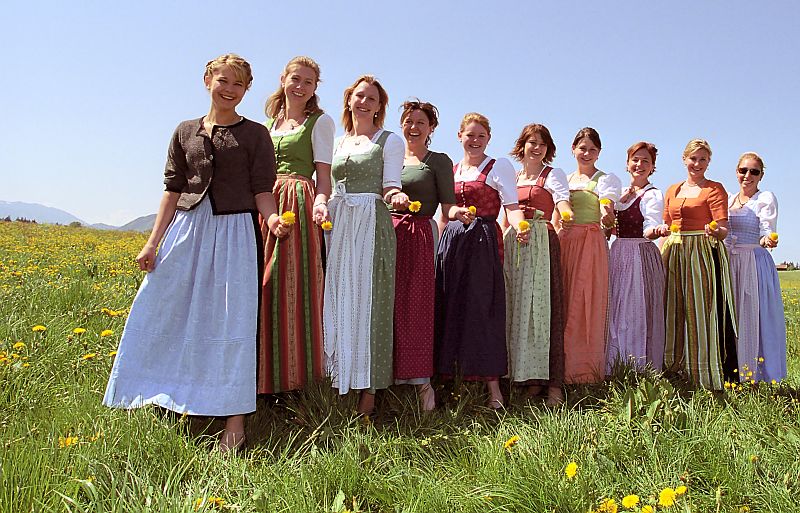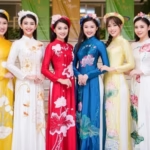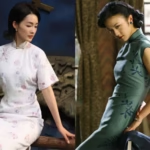Dirndl (Germany) is not merely a traditional dress; it symbolizes the rich cultural heritage of the Alpine region and serves as a canvas illustrating centuries of German history, personality, and pride. As we delve into this fascinating attire’s history, significance, and modern interpretations, we come to appreciate its value in contemporary society.
Historical Evolution of Dirndl
The journey of Dirndl begins in the 16th century, where it was initially worn by female peasants in rural regions, especially in Bavaria and Austria. Over time, the dress evolved significantly, influenced by social changes, economic developments, and regional identities.
Origins and Early Adoption
In its nascent form, the dirndl was practical, reflecting the hard-working lifestyle of peasant women. It comprised simple materials, often made from wool or linen, which were available at the time.
The dirndl typically included a bodice, skirt, and apron, designed for ease of movement while working in the fields. This practicality did not diminish its aesthetic appeal; instead, it showcased the women’s craftsmanship through colorful fabrics and intricate stitching.
As the industrial revolution took root, urbanization began to shape how traditional clothing was perceived. While many abandoned dirndls for more modern outfits, rural communities continued to cherish them, leading to their preservation and gradual transformation into a symbol of cultural identity.
The Dirndl during the Romantic Period

The Romantic period of the 19th century brought about a renewed interest in folklore and tradition across Europe. Artists and writers began celebrating peasant life as idealized, noble, and picturesque, contributing significantly to the dirndl’s rise as a national symbol of German heritage.
Fashion designers started taking notice, introducing lavish materials like silk and satin, adorned with intricate embroidery. The evolution reflected not just a change in fabric but also a shift in societal perception. The dirndl transitioned from an everyday garment into a festive outfit that celebrated cultural roots during fairs, festivals, and family gatherings.
The Modern Era and Reinterpretations
Fast forward to today, the dirndl has found a place in festive celebrations, particularly at events like Oktoberfest. While maintaining its traditional elements, modern interpretations have emerged, catering to changing tastes and lifestyles.
Some designers have opted for bolder colors and unique patterns, combining contemporary fashion trends with traditional aesthetics. This blend allows the dirndl to remain relevant while still honoring its historical roots. Moreover, the global fashion landscape has embraced the dress, allowing international audiences to engage with Bavarian culture.
As cities worldwide adapt to multicultural influences, dirndls are increasingly seen in diverse settings beyond their origins. They symbolize an appreciation for heritage, enabling wearers to connect with their ancestry or simply revel in the timeless beauty of the attire.
Cultural Significance of Dirndl
Beyond aesthetics, the dirndl represents a profound connection to German culture. Through its design and usage, it reflects societal values, traditions, and even shifts in gender roles over time.
Femininity and Identity
Worn predominantly by women, the dirndl conveys femininity and grace. Traditionally, the way one wore the dirndl held significant social meaning. The positioning of the apron’s knot indicated one’s marital status—tied on the left for single women, right for those married, and back for widows.
This practice speaks volumes about identity and societal structures in German-speaking regions. Women felt empowered in dirndls as they navigated familial and social spheres, embodying both strength and elegance.
With the rise of feminism and evolving notions of gender expression, some contemporary interpretations challenge these traditional associations. Designers now create dirndls that cater to various body types and personal styles, emphasizing empowerment and individual choice rather than adherence to historical norms.
Regional Variances and Celebratory Events
Dirndls vary widely across different regions, each exhibiting unique characteristics reflecting local customs and traditions. For instance, the color palette, fabric choice, and decorative patterns can differ significantly between Bavaria and Tyrol, illustrating the rich tapestry of cultural diversity within Germany.
These variances become most evident during celebratory events. Festivals like Oktoberfest, while globally recognized, showcase regional pride through dirndls donned by attendees. The event becomes a vibrant fusion of tradition, camaraderie, and joy, where locals and tourists alike participate in cultural celebrations.
The dirndl serves as both a unifying element and a distinctive marker of local identity. Wearing the dress fosters a sense of belonging, igniting pride in one’s roots while promoting cultural exchange among diverse populations.
Contemporary Adaptations in Fashion
As we navigate globalization, the dirndl continues to transform. Designers and brands recognize the need to merge tradition with modern flair, leading to innovative styles that resonate with younger generations.
Online platforms have also contributed significantly, making the dirndl accessible to audiences worldwide. E-commerce stores dedicated to selling dirndls have flourished, creating a space for customers to explore various styles, budgets, and designs tailored to contemporary tastes.
Social media has further amplified this trend, enabling influencers and fashion enthusiasts to showcase their dirndl ensembles, sparking interest and inspiration. This digital engagement encourages individuals to celebrate their cultural heritage while incorporating personal style, thus reimagining the dirndl as a versatile garment suitable for various occasions.
The Importance of Sustainability in Dirndl Fashion

Sustainability has become a crucial aspect of the fashion industry, and the dirndl offers a unique opportunity to promote eco-friendly practices while respecting traditional craftsmanship.
Traditional Craftsmanship Meets Modern Consciousness
Historically, dirndls were handmade, showcasing artisans’ skills and attention to detail. The revival of this craftsmanship aligns perfectly with the contemporary sustainability movement.
Many brands are now prioritizing ethically sourced materials and environmentally friendly production methods, ensuring that the dirndl remains a sustainable choice for consumers. By investing in high-quality fabrics and fair labor practices, designers contribute to reducing the overall ecological footprint of fashion.
Furthermore, the shift towards slow fashion promotes the idea of investing in timeless pieces, encouraging consumers to cherish their dirndls rather than viewing them as disposable items. This approach fosters a deeper connection between the wearer and the garment, emphasizing quality over quantity.
Upcycling and Vintage Trends
Another aspect of sustainability in dirndl fashion is the growing popularity of upcycling and vintage trends. Second-hand shops and online marketplaces allow individuals to discover unique dirndls with historical significance, giving them new life while reducing waste.
By embracing vintage and thrifted garments, wearers can express their individuality while honoring the past. This trend resonates particularly with younger generations who seek authenticity and meaningful connections to their clothing choices.
Moreover, creative designers have begun repurposing old dirndls, transforming them into modern silhouettes or accessories. These innovations breathe new life into forgotten pieces, showcasing the boundless possibilities of sustainable fashion.
Educational Initiatives and Awareness
Raising awareness about the dirndl’s cultural significance and the importance of sustainability is key to fostering appreciation for this traditional attire. Education initiatives can help individuals understand the stories behind each garment, connecting them to their cultural roots while promoting responsible consumption.
Workshops, exhibitions, and community events centered around dirndls can engage audiences, encouraging them to explore the nuances of traditional attire and its relevance in today’s world. Such initiatives strengthen communal ties and inspire respect for the craftsmanship involved in creating dirndls.
Collaborating with schools and organizations to incorporate lessons on traditional crafts and sustainable practices can empower future generations to carry forward the legacy of dirndls while ensuring that they remain connected to their cultural heritage.
Conclusion

In conclusion, the Dirndl encapsulates far more than a mere article of clothing; it embodies a narrative woven through history, culture, and identity. Its evolution from humble beginnings to a global symbol of German heritage highlights the versatility and resilience of this attire.
The dirndl stands as a testament to the power of tradition while embracing modernity, allowing future generations to connect with their roots in meaningful ways. As we continue to navigate the complexities of globalization and sustainability, the dirndl serves as a reminder of the importance of honoring our cultural heritage while adapting to contemporary realities.
Through thoughtful approaches to fashion, education, and community engagement, we ensure that the dirndl remains a cherished part of German culture—a vibrant thread in the intricate tapestry of human expression that celebrates our shared histories and diverse identities.
✉️ Stay Connected — Subscribe for Weekly Updates
Discover timeless stories, practical wisdom, and beautiful culture — delivered straight to your inbox.
*We only share valuable insights — no spam, ever.






